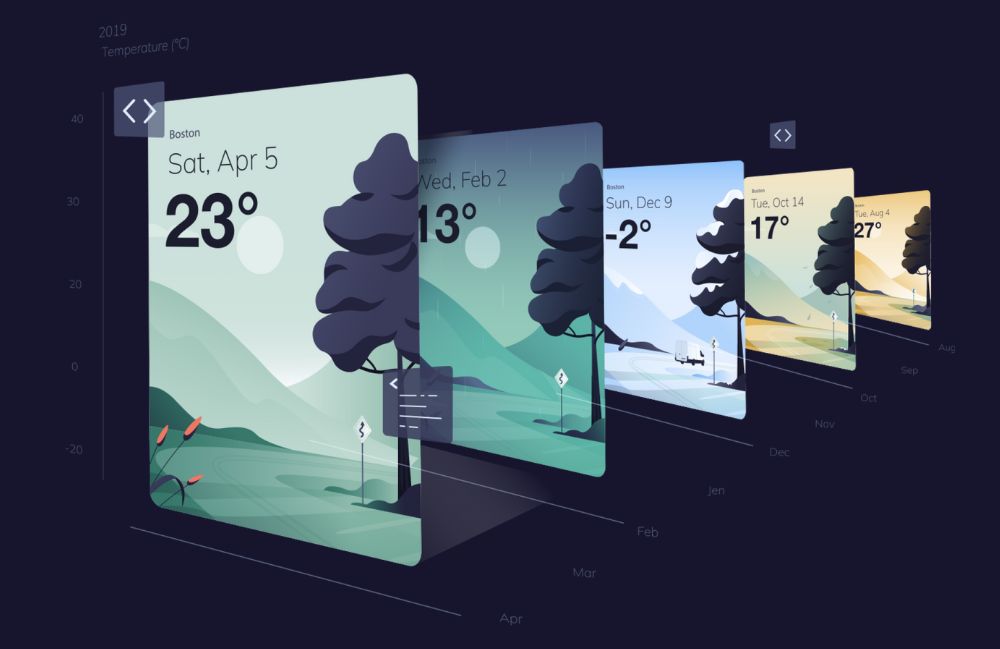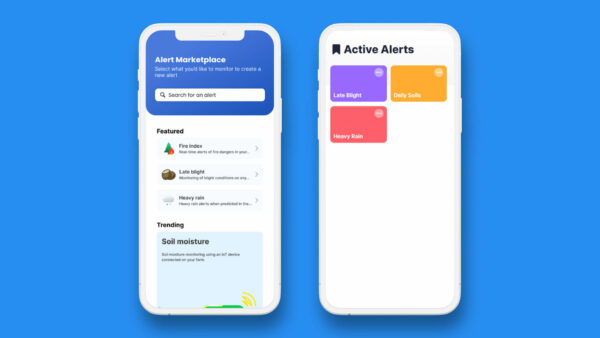Climate data is crucial in modern business strategy, especially in the face of growing climate change challenges. The Tomorrow.io Climate API is an advanced tool providing access to 20 years of hyperlocal, hourly climate data, enabling you to make informed decisions and efficiently adapt to climate change impacts.
Why Choose Tomorrow.io Climate API?
The Tomorrow.io Climate API is designed for developers seeking to integrate comprehensive climate variables into their applications. Leveraging advanced weather models, this Climate API provides valid data sets to meet diverse climate-related challenges, aiding in climate change adaptation at a broader scale.
With a Climate API, you can access historical climate data that can aid you with improved weather-related decision-making for your business or organization.
How to Utilize Tomorrow.io’s Climate API
Via the Climate Normals endpoint, this Climate API provides access to 20 years of high-resolution climate data. Developers can aggregate this data daily or over 20 years for various weather fields, including temperature, precipitation, wind speed and direction, and much more. When you sign up for Tomorrow.io’s weather API, you can retrieve up to two decades of climate data with a single API request.
Decoding Climate Data Fields
Climate Normals, as part of the entire Weather API from Tomorrow.io, provides access to various climate data fields and weather layers, including current temperature, base humidity, precipitation, air quality, wind speed, and direction. Developers can aggregate this data to extract valuable insights into long-term climate trends and patterns, collected from a combination of our extensive network of weather stations and publicly available data, processed through our proprietary modeling.
Leveraging Climate Data Insights for Optimal Business Strategy
The Tomorrow.io Climate API allows you to utilize hyperlocal climate data to enhance your business strategy and resource management. This data equips you to make data-driven decisions to mitigate climate change-associated risks and plan for the future efficiently.
Adapting to Climate Change Across Diverse Sectors
The Climate API is a valuable tool for businesses, governments, and individuals intending to understand and plan for climate change impacts. Industries ranging from general ESG goals, truck manufacturers, airlines, energy production, agriculture, and urban planning, can all benefit from our API by making data-driven decisions.
Understanding the Climate API
Our Climate API offers access to Climate Normals, which provides a comprehensive view of climate patterns over 20 years. Businesses, governments, and individuals looking to plan for the future can take advantage of these insights, as Climate Normals are a powerful solution for addressing climate change impacts.
How Businesses Can Benefit from the Climate API
Tomorrow.io’s Climate API is a vital tool for businesses and organizations needing to understand and manage climate change impacts. Companies can make informed decisions on resource allocation, supply chain management, and investment strategies by accessing insights into long-term climate trends and patterns with Climate Normals.
The Tomorrow.io Climate API is ideal for businesses, governments, and individuals looking to understand and plan for the impacts of climate change. Here’s where we imagine impacting the most:
General ESG goals:
The Climate API can help businesses reduce carbon dioxide emissions, avoid carbon leakage, and comply with carbon price regulations/carbon taxation by providing accurate climate data for emissions reduction strategies.
Truck Manufacturers
Trucking companies can use Climate APIs to optimize routes for zero-emission or cleaner fuel vehicles (or even zero-emission trucks), reducing their carbon footprint and operating costs.
Airlines
The airline industry can benefit significantly from the Climate API by accessing real-time and historical weather data to optimize routes and fuel consumption. By analyzing climate patterns, airlines can make data-driven decisions around scheduling flights, reducing delays due to weather conditions, and improving overall customer experience.
Energy Production
The Climate API is a valuable tool for the electricity and power sectors, allowing producers to optimize production based on historical climate data and long-term trends.
Agriculture
Farmers can leverage Climate Normals to understand long-term climate trends and patterns, optimizing crop selection and timing for planting and harvesting.
Urban Planning
Municipalities can use the Climate API to understand long-term climate trends and patterns to inform infrastructure planning and disaster risk reduction.
Climate API Frequently Asked Questions
What is the Climate API?
This tool offers access to Climate Normals, which provides a comprehensive view of climate patterns over 20 years. With an hourly temporal resolution, Climate Normals calculates and presents data between 2000 and 2020. Climate Normals offers valuable insights into long-term climate trends and patterns, making it an essential tool for businesses, governments, and individuals looking to understand and plan for the future. Climate Normals are a cutting-edge solution that can benefit those seeking to address the consequences of climate change, owing to high-resolution data and long-term perspective.
How Can Businesses Use the Climate API?
The Climate API is ideal for businesses and organizations that need to understand and manage the impacts of climate change. With the Climate API, companies can access valuable insights into long-term climate trends and patterns, making it an essential tool for businesses looking to understand and plan for the future. Many organizations can use Climate Normals to inform decision-making around resource allocation, supply chain management, and investment strategies.
What Weather Data is Available via Tomorrow.io’s Climate API?
The Climate API provides access to hourly weather data, including temperature, precipitation, wind speed, wind direction, and more. This data allows businesses to make data-driven decisions and prepare for future climate impacts, reducing risks and minimizing potential costs associated with extreme weather events.
Who Benefits from Tomorrow.io’s Climate API?
The Climate API can benefit various industries and use cases, including government agencies, renewable energy companies, heavy industry, and transportation companies. With Climate Normals, businesses can understand long-term climate trends and patterns, allowing them to make data-driven decisions to reduce risks, increase efficiency, and prepare for future climate impacts. The Climate API is a powerful tool for anyone interested in understanding and managing the effects of climate change.
Get Started With Historical Weather Data Today
Tomorrow.io’s Climate API is an advanced tool for precise, long-term climate data, enabling better strategies and intelligent decisions. Regardless of whether you’re a developer, a business, or a government agency, leverage this technology to optimize your operations, mitigate risks, and enhance overall performance.
Embark on your journey towards intelligent climate adaptation with Tomorrow.io’s Climate API.
















